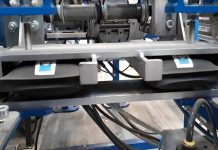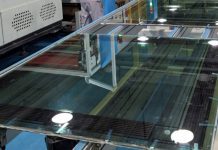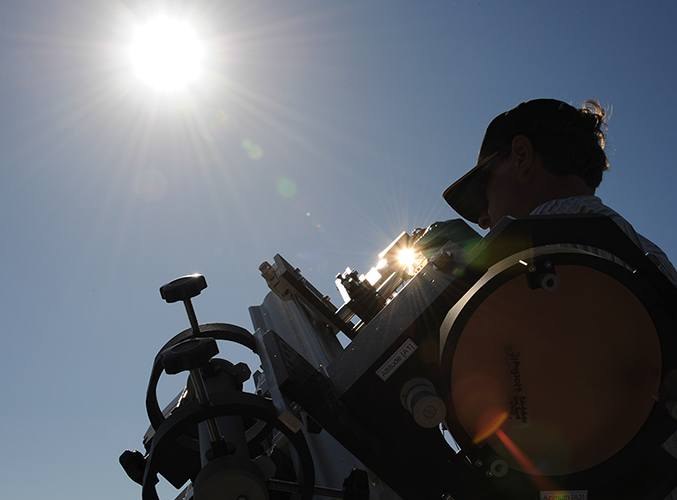
A team of engineers from the University of New South Wales’ Australian Centre for Advanced Photovoltaics (ACAP) has developed a new solar cell configuration that has pushed sunlight-to-electricity conversion efficiency to 34.5%.
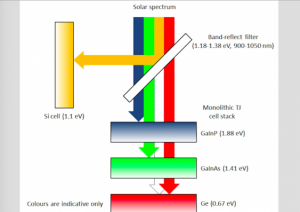
Image credit: www.unsw.edu.au
As confirmed by the US National Renewable Energy Laboratory, the result marks a new world record for unfocussed sunlight and is almost 44% better than the previous record, which reached 24% efficiency, but over a larger surface area of 800-cm2.
The record was set by Dr Mark Keevers and Professor Martin Green, using a 28-cm2 four-junction mini-module – embedded in a prism – that extracts the maximum energy from sunlight by splitting the incoming rays into four bands, using a four-junction receiver to squeeze even more electricity from each beam of sunlight.
The record-setting mini-module combines a silicon cell on one face of a glass prism, with a triple-junction solar cell on the other.
The triple-junction cell targets discrete bands of the incoming sunlight, using a combination of three layers: indium-gallium-phosphide; indium-gallium-arsenide; and germanium.
As sunlight passes through each layer, energy is extracted by each junction at its most efficient wavelength, while the unused part of the light passes through to the next layer, and so on.
“This encouraging result shows that there are still advances to come in photovoltaics research to make solar cells even more efficient,” said Mr Keevers.
“Extracting more energy from every beam of sunlight is critical to reducing the cost of electricity generated by solar cells as it lowers the investment needed, and delivering payback faster.”
ARENA CEO Ivor Frischknecht said the “Power Cube” power tower project was supported by $1.4 million funding from the agency, demonstrating the importance of supporting early stage renewable energy technologies.
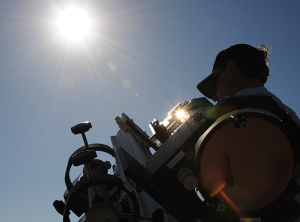
Image credit: arena.gov.au
“Australia already punches above its weight in solar R&D and is recognised as a world leader in solar innovation. These early stage foundations are increasingly making it possible for Australia to return solar dividends here at home and in export markets – and there’s no reason to believe the same results can’t be achieved with this record-breaking technology,” Mr Frischknecht said.
“It’s great to see UNSW is working with another ARENA-supported company in Victoria – RayGen Resources – to explore how the advanced receiver could be rolled out at concentrated solar PV power plants. With the right support, Australia’s world leading R&D is well placed to translate into efficiency wins for households and businesses through the ongoing roll out of rooftop solar as well as utility-scale solar projects such as those being advanced by ARENA through its current $100 million large-scale solar round.”




